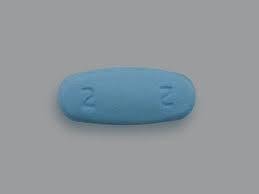Bexagliflozin Dosage
Medically reviewed by Drugs.com. Last updated on Aug 26, 2025.
Applies to the following strengths: 20 mg
Usual Adult Dose for:
Additional dosage information:
Usual Adult Dose for Diabetes Type 2
20 mg orally once daily in the morning
Comments:
- Assess renal function before initiating this treatment and at periodic intervals during the treatment.
- Not recommended for patients with an eGFR less than 30 mL/min/1.73 m2.
- Assess and correct volume depletion before initiating treatment with this drug.
Use: For the improvement of glycemic control in adults with type 2 diabetes mellitus
Renal Dose Adjustments
Data not available
Liver Dose Adjustments
Not recommended in severe hepatic impairment
Dose Adjustments
Data not available
Precautions
CONTRAINDICATIONS:
- Hypersensitivity to the active ingredient or any component of this drug product
- Patients on dialysis
Safety and efficacy have not been established in patients younger than 18 years.
Consult WARNINGS section for additional precautions.
Dialysis
Contraindicated
Other Comments
Administration advice:
- Administer with or without food.
- Do not crush or chew the tablet.
- In case of a missed dose, take the dose as soon as possible. Do not double the next dose.
Storage requirements:
- Store between 20C to 25C (68F to 77F); excursions permitted between 15C to 30C (59F to 86F).
General:
This drug is not recommended in patients with type 1 diabetes mellitus, as it may increase the risk of diabetic ketoacidosis in these patients.
Monitoring:
- Monitor renal function during treatment.
Patient advice:
- Read FDA-approved patient labeling.
- Ketoacidosis which is a serious life-threatening condition has been reported with the use of this drug.
- If ketoacidosis symptoms develop, patients should check their ketones (if practical), even if blood sugar is not elevated. Stop taking this drug and get immediate help if ketoacidosis symptoms like nausea, vomiting, abdominal pain, fatigue, or labored breathing appear.
- Inform patients that treatment with this drug may result in an increased risk of amputations. Patients should know the importance of regular preventive foot care. Keep an eye out for any new leg or foot pain or tenderness, sores, ulcers, or infections, and get medical help right away if they appear.
- This drug may cause symptomatic hypotension, in which case the patient should contact their physician.
- Maintain adequate fluid intake as dehydration may increase the risk of hypotension.
- Urinary tract infections may occur, which can be severe. Patients should be informed of the signs and symptoms of a urinary tract infection. Consult a physician if these symptoms appear.
- This drug in combination with insulin or an insulin secretagogue may increase the likelihood of hypoglycemia and a lower dose of insulin or an insulin secretagogue may be required to lower the risk of hypoglycemia.
- This drug causes necrotizing infections of the perineum (Fournier's gangrene). Seek medical attention right away in case of pain, tenderness, redness, or swelling in the genital region or from the genitalia to the anus, with a fever of more than 100.4 F or malaise.
- Female patients should be informed about the possibility of vaginal yeast infections as well as the symptoms and signs of these conditions. Inform them of available treatments and when to seek medical help.
- Men should be warned that yeast infections of the penis, such as balanitis or balanoposthitis, can occur, particularly in uncircumcised men and people with a history of infections. Inform them of the symptoms and signs of balanitis and balanoposthitis (rash or redness of the glans or foreskin of the penis). Inform them of available treatments and when to seek medical help.
- Inform patients who are pregnant and women who are sexually active about the potential risk to the fetus with the use of this drug. Instruct patients to inform their physician if they are expecting or intend to become pregnant.
- Breastfeeding is not recommended during treatment with this drug.
- Treatment with this drug will result in excretion of glucose in urine.
- Take this drug as prescribed. If a dose is missed, it should be taken as soon as possible. Do not double the next dose.
More about bexagliflozin
- Check interactions
- Compare alternatives
- Pricing & coupons
- Reviews (2)
- Drug images
- Side effects
- During pregnancy
- Drug class: SGLT-2 inhibitors
- Breastfeeding
- En español
Patient resources
Other brands
Professional resources
Other brands
Related treatment guides
See also:
Further information
Always consult your healthcare provider to ensure the information displayed on this page applies to your personal circumstances.


